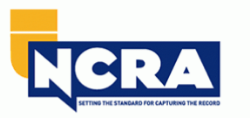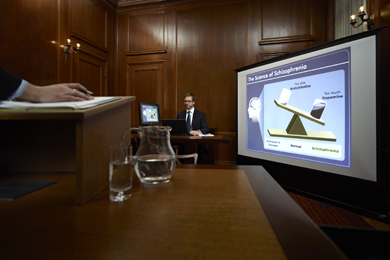Trial Presentation Creating Compelling Displays for Courtroom Success
Trial Presentation Creating Compelling Displays for Courtroom Success
Blog Article
Mesmerize the Jury: Important Elements of a Powerful Trial Discussion
In the realm of legal campaigning for, the capability to captivate a court is vital to the end result of a test (trial presentation). Essential aspects such as recognizing the audience, crafting an engaging story, and mastering verbal and non-verbal communication are vital parts of an efficient discussion. Moreover, the critical use of aesthetic aids can considerably improve understanding and retention of crucial disagreements. As these variables intertwine, they create a natural technique that not only educates however also involves jurors on numerous degrees. What particular strategies can absolutely transform a standard presentation right into a remarkable experience for the jury?

Recognizing Your Target Market
Comprehending your target market is a critical aspect of effective trial presentation. A successful presentation pivots on the capacity to comprehend the demographics, worths, and proneness of jurors. This understanding educates exactly how disagreements are framed, proof exists, and emotional appeals are crafted, ensuring that the message resonates with the jurors on a personal level.
Research study indicates that jurors come from diverse histories and may have differing degrees of understanding pertaining to legal procedures. Additionally, recognizing the jurors' prospective biases and life experiences enables the test speaker to expect arguments and address worries proactively.
Effective trial presentation additionally involves observing jurors' responses during the process. Being in harmony with non-verbal cues can offer understanding right into their involvement and receptivity, enabling real-time modifications in approach. Inevitably, a profound understanding of the target market not only boosts communication however likewise constructs relationship, enhancing the likelihood of a positive outcome. Involving with jurors as individuals rather than a cumulative system is important in fostering a strong connection in the court room.

Crafting a Compelling Story
Crafting an engaging story is essential in guiding jurors via the complexities of an instance. A well-structured story not just streamlines complex lawful principles yet likewise engages jurors on a psychological level, making the information more relatable and unforgettable.
To attain this, attorneys need to start by determining the core message they desire to share. This message should resonate with the jurors' worths and experiences, promoting a link that goes beyond mere facts. The narrative ought to unfold logically, providing occasions in a clear series to stay clear of confusion. This chronological method can assist jurors comply with the development of occasions, highlighting domino effect.
Including human components-- such as personal stories or stories-- can additionally improve the story's influence. These elements stimulate compassion, permitting jurors to imagine the effects of the instance on real lives. In addition, employing a consistent motif throughout the presentation strengthens the main argument, making it easier for jurors to retain important points.
Eventually, an engaging narrative changes a trial presentation from a plain address of truths right into a persuasive story that captivates the jury, urging them to mull over with both reason and from this source emotion.
Using Visual Help
Incorporating visual help right into a trial presentation can considerably enhance jurors' understanding and retention of info. Visual products such as charts, diagrams, pictures, and videos can change intricate legal ideas and proof into easily absorbable layouts. By involving multiple detects, these help allow jurors to imagine the situation's crucial elements, making it much easier for them to follow along and realize detailed information.
Furthermore, well-designed aesthetic aids can stress crucial points and highlight partnerships between various pieces of evidence. For instance, timelines can efficiently show the sequence of occasions, while annotated photos can make clear certain information appropriate to the instance. This not just help in understanding but additionally enhances the story offered by the attorney.
It is important, however, to guarantee that aesthetic help matter, clear, and skillfully offered. Excessively complex or chaotic visuals might overwhelm jurors and diminish the message. When made use of deliberately, visual help offer to match the dental debates and enhance the general influence of the trial presentation. Eventually, reliable aesthetic communication can be a powerful device in encouraging jurors and helping them reach notified verdicts.
Understanding Verbal Communication
Efficient spoken communication is important in a trial presentation, as it offers as the main ways with which attorneys convey their debates and attach with jurors. Simpleness in language promotes understanding and helps jurors grasp intricate concerns provided during the test.
In addition, tone and pacing dramatically influence exactly how messages are received. A certain tone shares authority, while proper pacing allows jurors to absorb details without feeling bewildered. Lawyers ought to also differ their vocal inflections to emphasize vital factors and preserve jurors' passion throughout the discussion.
Additionally, the company of spoken arguments is crucial. Structuring the narrative practically and coherently assists jurors follow the lawyer's line of reasoning, making it less complicated for them to maintain crucial information. Making use of persuasive strategies, such as storytelling, can additionally improve the psychological vibration of the arguments provided, thereby producing an extra profound link with jurors.
Eventually, mastering verbal communication not just enhances a lawyer's instance however additionally fosters trust fund and rapport with the court, considerably boosting the chances of a beneficial verdict.

Engaging With Body Movement
Nonverbal communication plays an essential function in trial presentations, frequently sharing messages that words alone can not reveal. Body language, including gestures, pose, facial expressions, and eye call, considerably influences how jurors view the credibility and genuineness of the presenter. A positive position, with shoulders back and an open position, can infuse count on, while closed-off body movement might recommend defensiveness or unpredictability.

Facial expressions must reflect the emotions linked with the situation, enhancing the narrative being offered. For instance, an honest expression during an emotional moment can elicit compassion and strengthen the sob story. Ultimately, grasping body movement is important for reliable trial presentations, as it boosts verbal communication and establishes an engaging existence that reverberates with the court.
Final Thought
Finally, mesmerizing the court necessitates a calculated approach that includes understanding the audience, crafting an engaging story, utilizing visual help, mastering verbal communication, and involving via body movement. Each element plays a vital duty in developing an effective test presentation that resonates with jurors on both emotional and intellectual levels (trial presentation). By integrating these elements efficiently, attorneys can considerably improve their capacity to encourage and affect court decision-making
Report this page